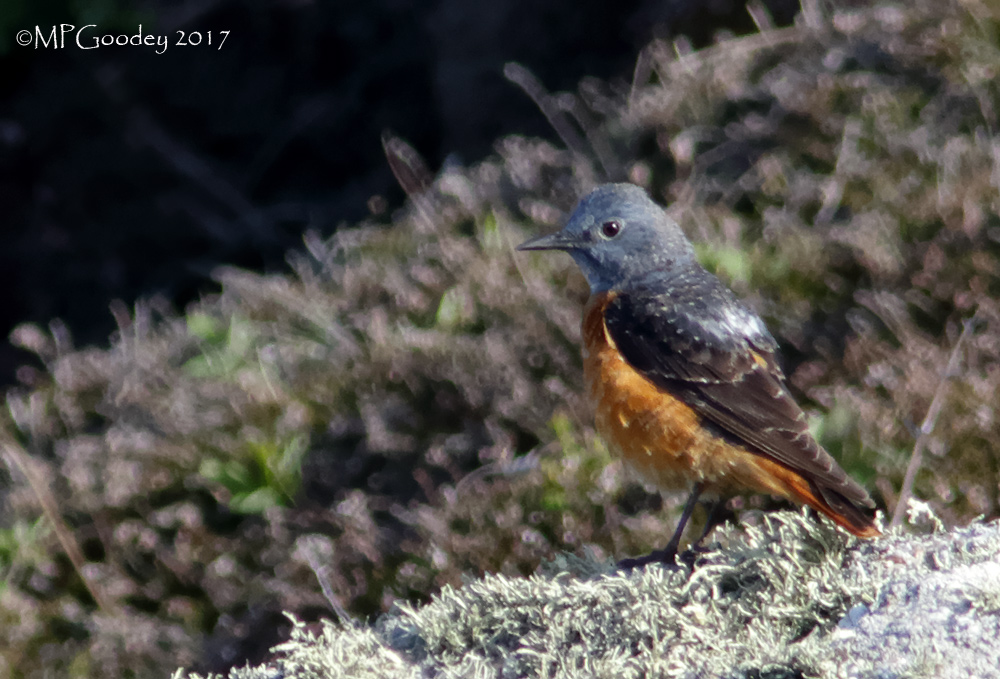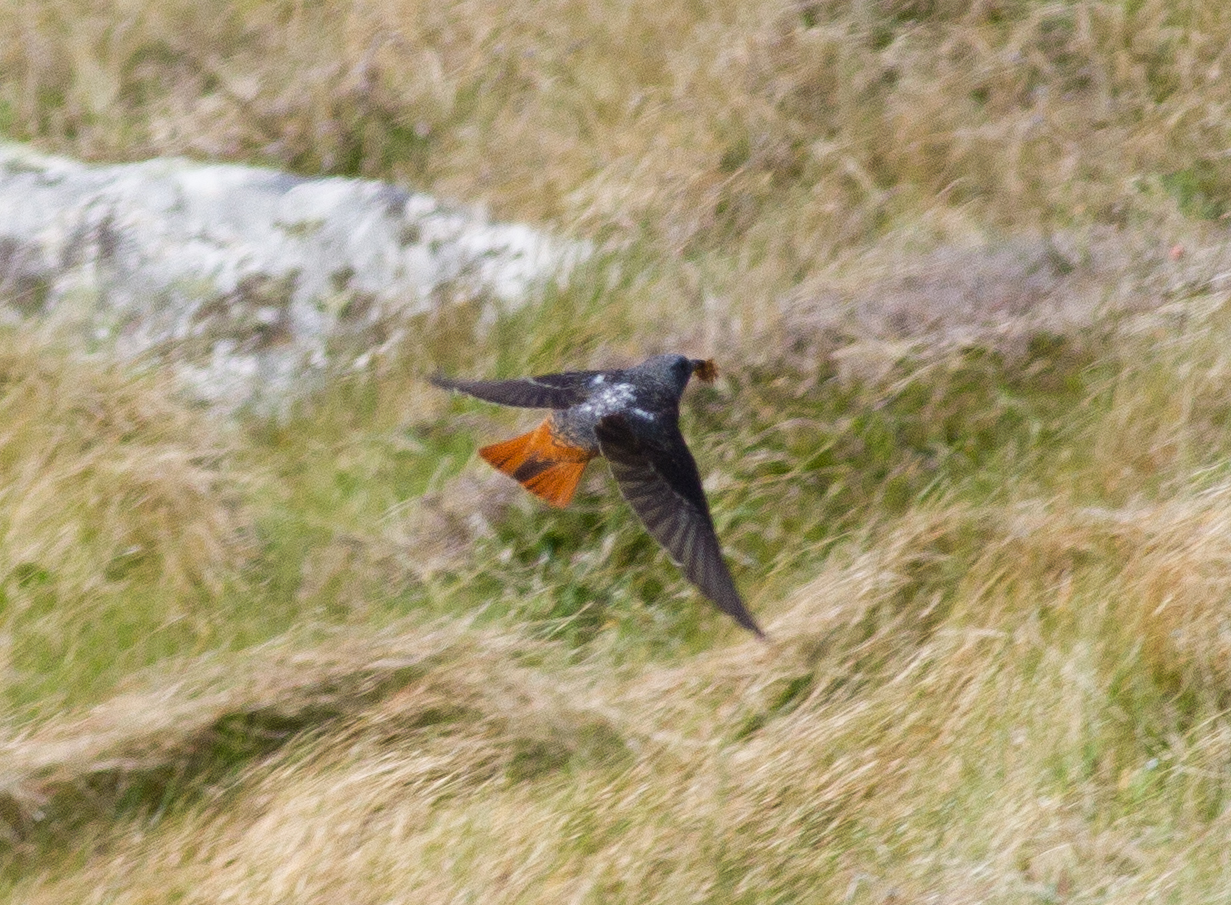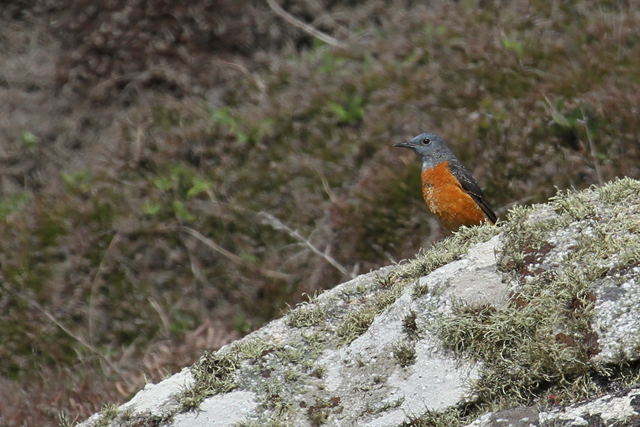When my husband, Michael, and I were walking around St Martin's on Sunday, I was still pointing out the significant features of a Linnet in a low-lying farm field, when he asked: "What's that on the wall?" Birdwatch can't publish my next two words, as about 6 metres in front of us stood a thrush-like bird with a blue head and orange belly. And then it was gone. I thought back to Crete, 15 years ago. "It's a Blue Rock Thrush, or some kind of rock thrush. That's seriously rare! Get the app open!" The bird was back up, giving us a great view, showing darker wings, a bit of white on the back and orange extending down into the tail. Michael now had the page ready. It was clearly a male Common Rock Thrush. Why didn't I bring my camera, I thought.
A family scared it off, much to the chagrin of the father who was himself a keen birder. We hung around to no avail, then parted company, the father consoling himself with the possibility that it had been a Common Redstart. That night, I read it was much rarer than I'd realised, so I left a message for St Martin's birder Viv Jackson in case he hadn't seen it, and I emailed Scilly bird recorder Nigel Hudson.
Waking at 6.15 am, I longed to find the bird again and to take a photo. If Viv hadn't seen it, nobody was going to believe me. Guessing that the thrush was likely to have gone to more familiar terrain, I worked my way around the rocky coastal headlands. One and a half hours later, on the opposite side of the island, I flushed it. Wow! I could hardly hold my camera steady enough to take a record shot. I watched it for 10 minutes before losing it. I went in search of phone signal and called Viv, who set out at once.

The St Martin's Common Rock Thrush is the first male of its kind to be twitchable since 1995 (Photo: Martin Goodey)
Nigel called and was astounded to hear I'd found the bird again so far from the original site. Was I sure? I decided to declare my certainty, even though the clarity of the previous day's sighting had been lacking. As soon as he'd hung up, my confidence plummeted. However, I was onto it again 45 minutes later. It was in shadow and the more I looked, the more nervous I became. Did it have enough white on its back to be a Common Rock Thrush? What if a boatload of twitchers were to arrive and declare me misguided? They would never believe that we really had seen a Common Rock Thrush the previous day. Might this bird actually be a Common Redstart? As if to order, a redstart flew into view, hovering above the thrush. It was much smaller. Phew! I was back up to 95 per cent certainty, and now Viv and his wife were there and my excitement was confirmed.
It was great fun to hang around and hear the buzz, one man even declaring that if he didn't see another good bird all season he wouldn't care. I doubt I will ever again be a finder of a rarity: though passionate about birds, I don't expect I'll ever be certain that a bird has a long hind claw or long primary projection. But I'm very grateful to the rock thrush for popping up onto that wall and making my holiday. I wish it a safe journey to warmer climes.







